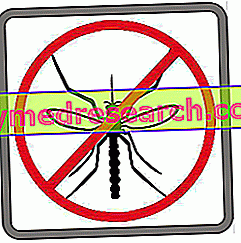Preventive Treatment
A safe and effective method to prevent the dog from getting sick with Filaria is to constantly treat the animal with substances that do not allow the development of the adult parasite.

Since the transmission of the parasite is limited to the warm months, as mosquitoes appear in the spring and disappear in the fall, the prevention treatment on our animals, should go from April to November.
The therapy can be started already in animals that have an age of 6-8 weeks.
There are, in Italy, several products that act on the larval stages (L3-L4) of the parasite, causing their death. Being substances that act on the larval stages of Filaria prior to L5, they are effective up to the 50th -55th day from the onset of infestation (penetration of Filaria in the definitive host).
The drugs available are:
- Milbemycin oxime (INTERCEPTOR® FLAVOR; MILBEMAX® DOGS) given every 30 days orally, starting within 1 month from the onset of mosquitoes and ending with the last tablet within 30 days of their disappearance;
- the Selamectin (STRONGHOLD), applied monthly, in spot on solution, on the skin at the base of the neck, with first application within one month of the appearance of the mosquitoes and the last within 1 month of their disappearance;
- Moxidectin, which can be found:
- in spot on solution (ADVOCATE®), to be applied at least one month before the expected appearance of mosquitoes, then monthly up to 30 days after the disappearance of the insects;
- in the form of oral tablets (GUARDIAN®), which begin to be given within a month of the appearance of intermediate guests (mosquitoes), and continue on a monthly basis until the following month the disappearance of the same;
- in solution for injection (GUARDIAN®SR), which, once injected subcutaneously, within 30 days of the onset of mosquitoes, has an efficacy that lasts throughout the risk season of Filaria;
- Ivermectin (CARDOTEK-30®; CARDOTEK-30®PLUS), in the form of chewable tablets, begins to be administered, every 30 days, within one month of the first exposure to mosquitoes, to end with the last dose within one month since the last exposure.
Treatment of sick Filaria dog
It has already been said several times that cardiopulmonary filariosis is a subtle disease, as it occurs clinically long after the parasite has penetrated our animal.
For this purpose, it is good to perform - in dogs that have never undergone preventive prophylaxis (measures taken to prevent the disease), or in dogs that are suspected to have been "discovered" (unprotected) for a certain time (ie for the which was not followed correctly the administration of the drugs in the indicated times) - a test for the search of the antigens (substances of the parasite) of the Filaria. This test, very simple and not at all invasive or painful for our dog, is performed by the veterinarian for a few tens of euros.
If the animal is diagnosed with cardiopulmonary filariasis, the so-called " adulticidal therapy ", a treatment that kills adult parasites established in the heart and pulmonary arteries, is performed - after having evaluated the dog's state of health.
It should be remembered that the precocity with which Filaria is diagnosed in animals is extremely important. Depending on the symptomatic class in which the dog is found (Class 1, Class 2, Class 3 or Class 4), the setting of an adequate therapy and, above all, the prognosis (prediction of healing) will depend.
For example, a dog belonging to Class 1 will have good healing prospects; one instead of Class 4 will be very serious, so as to have to intervene surgically to remove the parasites, without having much hope that it will survive.



